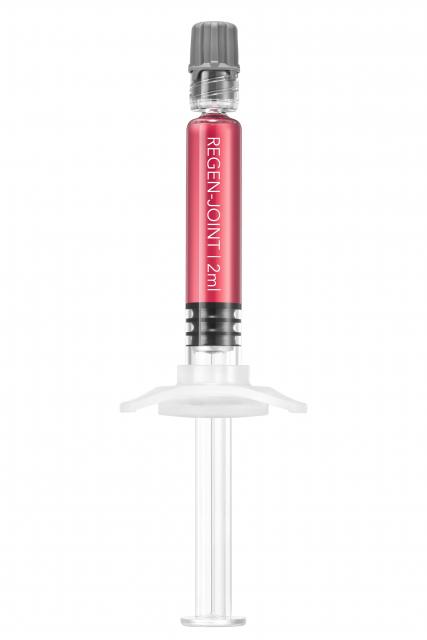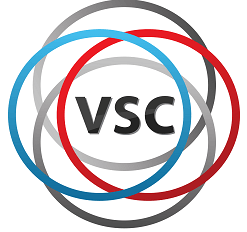
BIOCOMPATIBLE AND BIODEGRADABLE – compatible interaction of biomaterials with tissue.
Product has properties similar to healthy synovial fluid due to which natural protective processes of affected joints are preserved.
The viscosity of product is comparable to natural viscosity of synovial fluid in a dog: 380-400 centipoise (cP – dynamic viscosity unit). In dogs with acute arthritis viscosity value is: 20-30 cP, in dogs with chronic arthritis: 70-80 cP accordingly.
Biomaterials of REGEN-JOINT:
- Gold nanoparticles, metallic, non-ionic (12-20 nm) – are characterized by high biological activity: antibacterial and antifungal properties (proven by scientific action and effective inhibition of Escherichia coli, Staphylococcus aureus, Enterococcus hirae, Pseudomonas aeruginosa, Candida albicans), anti-inflammatory properties by blocking activity of COX-2, Interleukin-1 beta and regenerative. Due to their properties, gold nanoparticles are also effectively used in medicine, e.g. as drug carriers. Gold naturally occurs in animal and human tissues and is also naturally excreted outside organisms. More information in the tab: COMPOSITION.
- PVP (Polyvinylpyrrolidone) – biomaterial used in: blood products, pharmaceuticals (production of medicines), ophthalmology, in vascular surgery (stents), as hydrogel bandage, in cosmetology, food industry. Polymer is difficult to be decomposed in joint due to lack of specific enzymes. In REGEN-JOINT it is an indispensable stabilizer of gold nanoparticles and does not allow them to agglomerate, therefore it has a positive impact on their size and shape retaining their beneficial properties – safety for organism. PVP supports plasticity, elasticity, viscosity and durability of REGEN-JOINT. It also forms effective matrix for release of medicinal substances, e.g. in ischemic heart disease. More information in the tab: COMPOSITION.
Biocompatibility of product components has been confirmed by numerous scientific studies as well as by clinical trials of REGEN-JOINT at the Faculty of Veterinary Medicine at the University of Life Sciences in Lublin, Poland. Conclusions in the tab: SAFETY.

